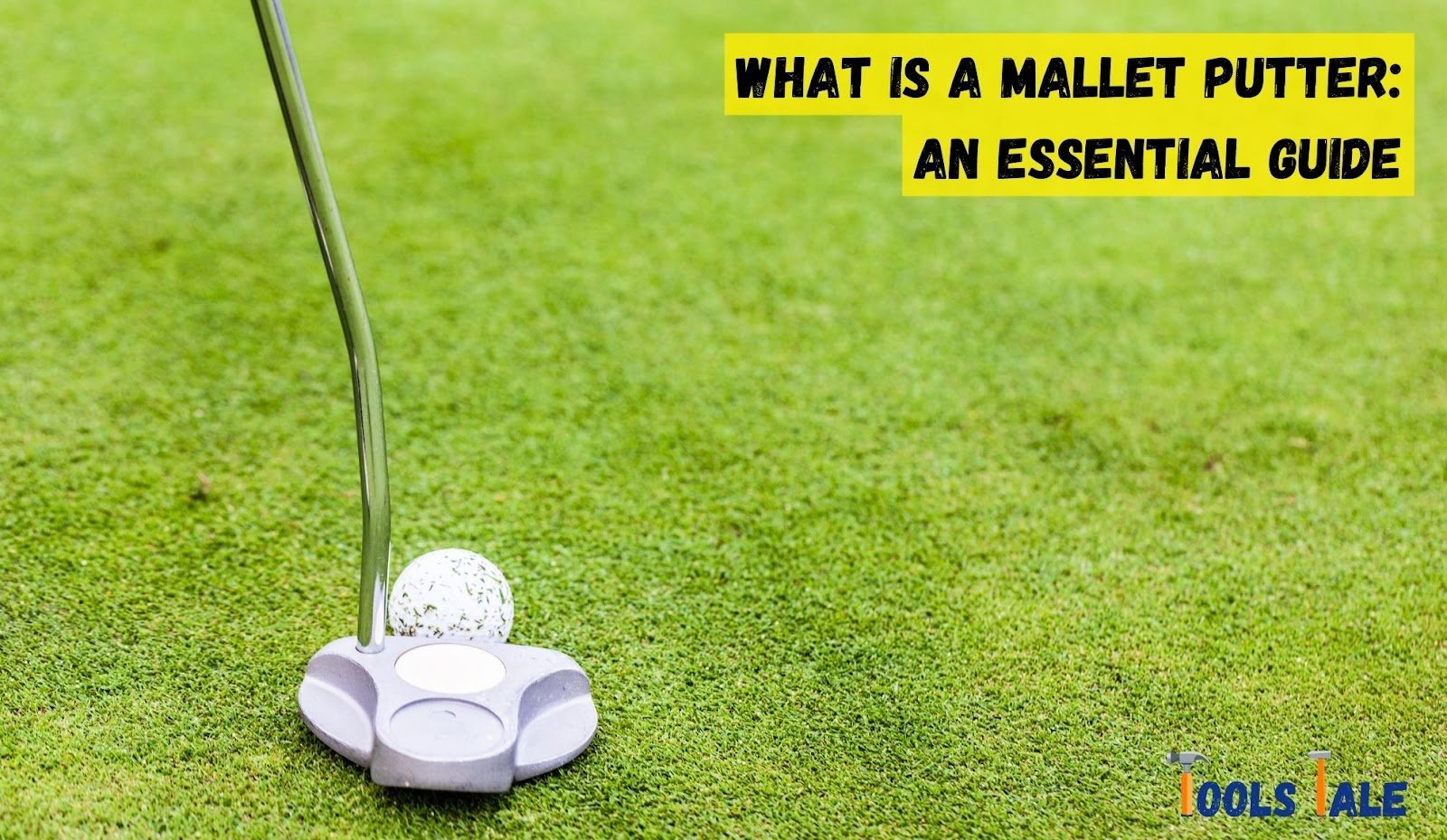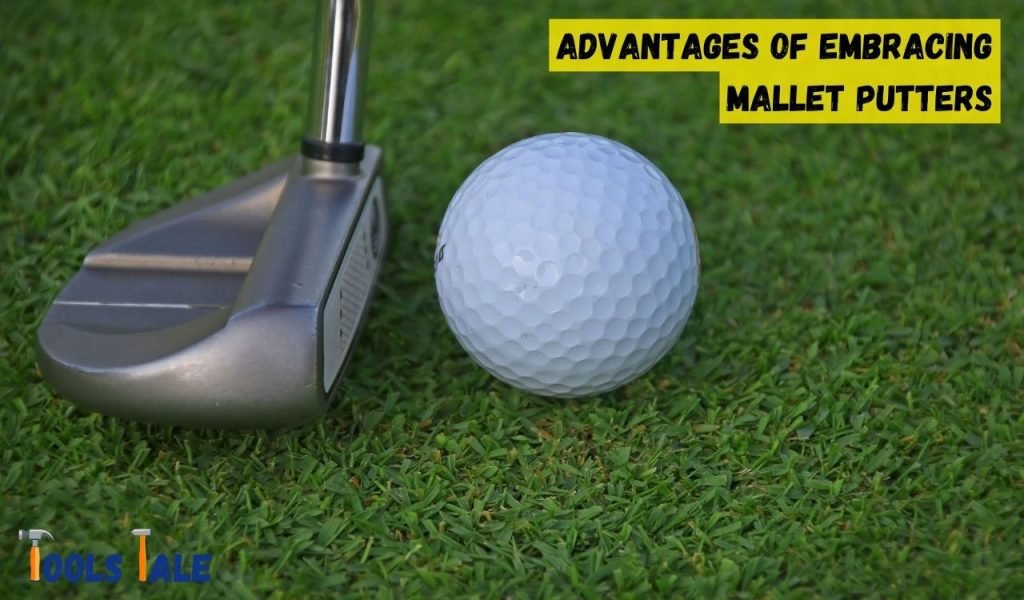Physical Address
304 North Cardinal St.
Dorchester Center, MA 02124
Physical Address
304 North Cardinal St.
Dorchester Center, MA 02124

What is a mallet putter? If you’re curious about this unique golf club and how it can transform your putting game, you’re in for a treat. In the world of golf, mallet putters are the secret weapons of precision and accuracy on the greens. They boast a distinct design that sets them apart from traditional putters, and their purpose is clear: to help you sink those crucial putts with confidence.
Whether you’re a seasoned golfer or just starting your golf journey, understanding the magic of a mallet putter might just be the key to shaving strokes off your game. So, let’s dive in and unravel the mysteries of this remarkable club.
Key Summary: What Is a Mallet Putter?
A mallet putter is a specialized golf club known for its distinctive, oversized head resembling a mallet or shield. Selecting the right mallet putter can significantly impact your putting game, so consider your stroke and alignment needs when choosing one.
A mallet putter is a specialized golf club designed for the critical task of putting on the greens. What sets it apart from other putters, such as the traditional blade putter, is its distinctive head shape. Picture a futuristic and somewhat geometric head, often larger and more elongated than its counterparts. This unique design is where the magic happens.
The mallet putter’s head typically features a broader, more forgiving sweet spot, which reduces the likelihood of mishits and provides greater stability. This increased stability results in improved accuracy and consistency in your putting strokes, a coveted advantage for any golfer.
One of the standout characteristics of mallet putters is the presence of alignment aids on the head. These visual cues, whether lines, dots, or shapes, assist golfers in aligning the putter face accurately to their target. This feature is especially beneficial for those who struggle with alignment, helping them sink more putts with precision.
When it comes to golf, the mallet putter stands out as a marvel of engineering and design. To truly appreciate its prowess on the green, let’s deconstruct its design, piece by piece.
At the heart of every mallet putter is its head, which boasts a unique shape compared to traditional blade putters. The mallet’s head is larger and often more elongated, resembling a futuristic spaceship. This design isn’t just for aesthetics; it serves a crucial purpose.
The larger head size increases the moment of inertia (MOI), reducing the chances of the club twisting upon impact. In simpler terms, this translates to greater stability, ensuring your putts stay on target even if you don’t hit the sweet spot.
Take a close look at the mallet putter’s head, and you’ll notice alignment aids. These visual cues, often lines, dots, or shapes, play a pivotal role in helping golfers align the putter correctly with their target line. They act as foolproof guides, ensuring that the clubface is square to the desired path, a game-changer for accuracy.
The mallet putter’s design extends to the shaft. Golfers can choose from various shaft lengths and offsets, allowing for customization to match their putting style. Longer shafts promote a smoother, pendulum-like stroke, while offset options assist with alignment, helping golfers square the face with ease.
Just as art comes in various forms, mallet putters offer an array of designs, from the ornate to the minimalist. Some feature intricate patterns and detailing, while others favor simplicity. Choosing a design that resonates with your aesthetics and confidence is all part of the mallet putter experience.

Now that we’ve dissected the mallet putter’s design, you might be wondering, “Why should I consider switching to one?” Well, hold onto your golf hats, because mallet putters bring a host of advantages to your game.
One of the standout advantages of mallet putters is their stability. The larger head and higher MOI make them less prone to twisting upon impact. This means that even on slightly mishit putts, you’re more likely to maintain a straight path to the hole. In golf, stability equals accuracy, and that can be a game-changer on the greens.
If you’ve ever grappled with aligning your putts correctly, mallet putters are here to lend a helping hand – quite literally. The alignment aids on the head make it easier to position the clubface square to your target line. As a result, you’ll find yourself sinking more putts with greater precision.
Mallet putters also shine when it comes to distance control. The balanced weight distribution and design features promote a consistent pace and roll on the ball. Say goodbye to those dreaded short putts and frustrating three-putt greens.
To illustrate the advantages of mallet putters in action, let’s take a quick peek at the world of professional golf. Many top-ranked golfers have embraced mallet putters and reaped the rewards. Their improved putting stats and tournament wins are a testament to the benefits these clubs bring to the game.
Selecting the perfect mallet putter can be a game-changer for your golf performance. With various options available, making the right choice requires careful consideration of your preferences and playing style. Here’s a guide on how to choose the ideal mallet putter:
Begin by assessing your natural putting style. Are you a straight-back, straight-through putter, or do you have a slight arc in your stroke? Understanding your stroke path will help you select a mallet putter that complements your technique.
Mallet putters come in a wide range of head designs, each offering unique benefits. Consider the following factors:
Pay attention to the weight distribution in the putter head. Some mallet putters have more weight in the heel or toe, affecting the club’s balance. Experiment with different weight distributions to find the one that feels most comfortable and stable in your hands.
Shaft length and offset can influence your putting mechanics. Longer shafts may encourage a smoother, pendulum-like stroke, while offset options can aid in alignment. Test different combinations to discover what works best for your game.
Ultimately, choosing the right mallet putter is a personal decision. Take the time to try out various models, ideally on a putting green. Pay attention to how each putter feels in your hands, as confidence and comfort are essential factors in making your selection.
Before making your final decision, spend time practicing with the mallet putters you’re considering. Make sure they feel right and perform well for your putting stroke. The more comfortable you are with the putter, the better your results on the greens.
Using the right mallet putter is a personalized process that combines technical considerations with personal preferences. By understanding your putting style, evaluating head design features, and seeking professional guidance, you can confidently select a mallet putter that enhances your golf game and improves your putting performance.

Now, let’s delve into some valuable tips and techniques to make the most of this specialized golf club and elevate your putting game to new heights.
Your mallet putter is a valuable asset to your golf game, and proper maintenance ensures it performs at its best. Here are some tips for keeping your mallet putter in top shape:
By following these guidelines for choosing, using, and caring for your mallet putter, you can maximize its effectiveness and enjoy improved putting performance on the golf course.
In conclusion, a mallet putter is more than just a golf club; it’s a game-changer on the greens. Its distinctive design, focus on precision, and alignment aids make it a go-to choice for golfers looking to enhance their putting skills.
Whether you’re a beginner looking to improve your short game or a seasoned pro seeking consistency, understanding the significance of a mallet putter can lead to lower scores and more confidence on the golf course. So, embrace this remarkable club, practice your putting, and watch as it transforms your golfing experience one putt at a time.
Mallet putters are designed to enhance golfers’ putting accuracy and consistency. They feature a unique head shape with alignment aids, providing stability and aiding alignment, making them ideal for precise short-distance putts.
The term “mallet putter” is derived from the club’s distinctive head shape, which often resembles a mallet or a hammer. This unique design sets it apart from traditional blade putters and serves to provide added stability during putting strokes.
A mallet putter works by offering a larger sweet spot and alignment aids on the head. The design promotes stability and accuracy, helping golfers maintain a consistent putting stroke and improve their chances of sinking putts with precision.
Mallet putters offer advantages such as increased forgiveness, alignment aids for improved accuracy, and a larger sweet spot. These features help golfers make more consistent putts and boost their confidence on the greens.
Putter quality is crucial as it directly affects your putting performance. A high-quality putter with the right design and craftsmanship can enhance your accuracy and confidence, ultimately leading to lower scores on the golf course.
Improving your putting skills involves regular practice and refining your technique. Work on your alignment, stroke mechanics, and distance control. Consider seeking advice from a golf instructor for personalized guidance.
Putters are measured by factors like shaft length, head design, loft, and lie angle. Shaft length and head shape are critical considerations when selecting the right putter for your game.
Putters are primarily used on the greens, specifically for putting. They excel in short-distance, precision shots, making them the club of choice for getting the ball into the hole on the putting surface.
Professional golfers use both mallet and blade putters, depending on personal preference and putting style. The choice between mallet and blade putters is individual, with some pros favoring one type over the other for their putting needs.